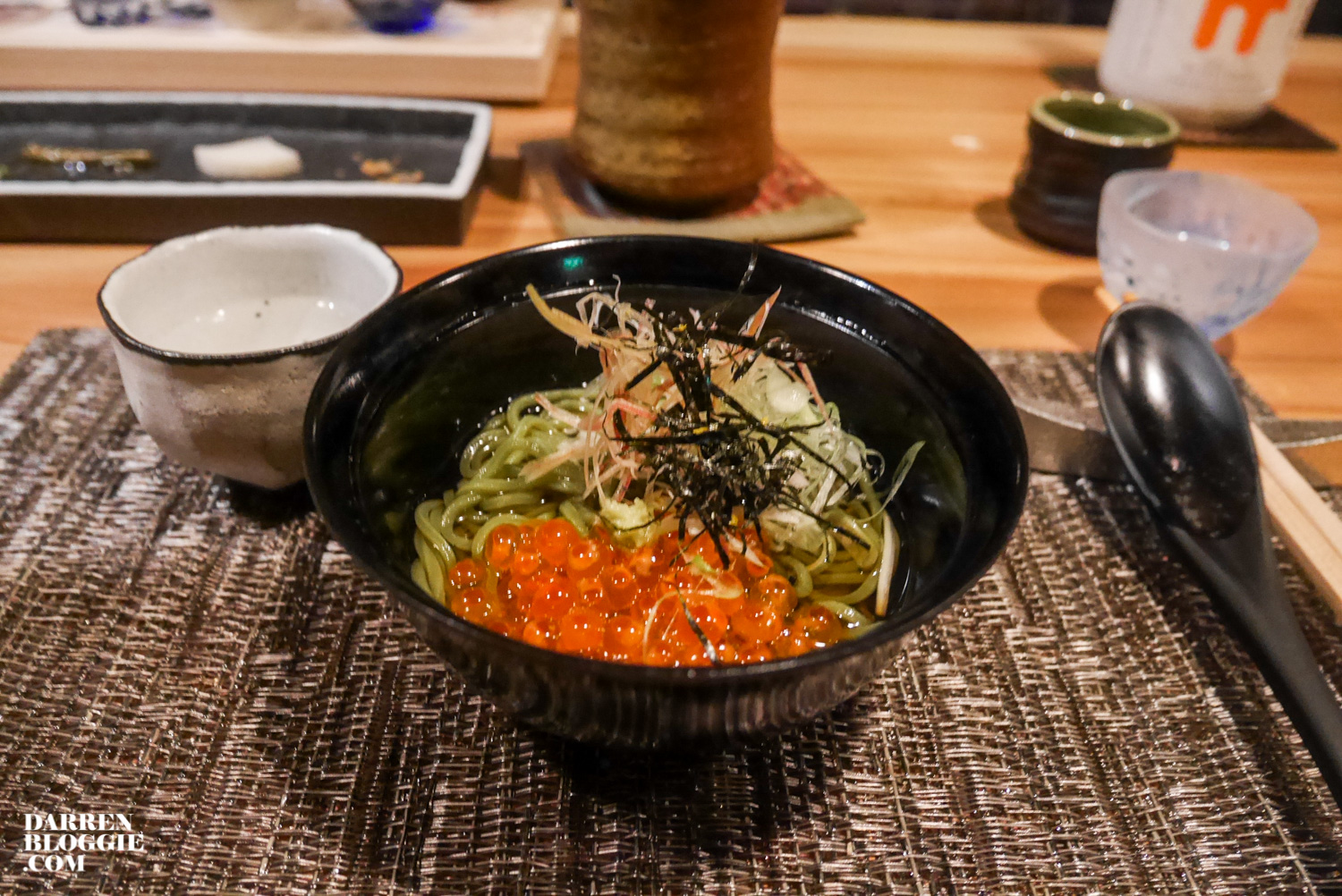A few months back, I was lucky to try an artisanal sake when I was at a bar with a friend, and was surprised at how smooth and delicious the sake tasted. Prior to that experience, what I remember of sake was warm, harsh alcohol that left a somewhat salty aftertaste. So sake had never been one of my favourite alcohol, truth be told.
Since that taste of sake however, I realised that there were more dimensions to sake than I realised. And at a recent sake tasting at Kakure, a boutique sake bar, I was lucky enough to experience these different dimensions of sake for myself.
Kakure is operated by the same team behind omakase powerhouse Ki-sho, located in the same building. Created to round out and complete the dining experience they offer, Kakure offers the same scrupulous attention to detail.
The sake list at Kakure is one of the largest in Singapore, carefully curated in a partnership with Ki-shio’s chef Kazuhiro Hamamoto and two kikisake-shi certified sake sommeliers John and Makoto.
To get the best sake-tasting experience, may I suggest picking the omakase option ($88++ onwards, final cost depending on the number of courses and type of food) along with the sake tasting set (from$58++ onwards for three sakes)?
The experienced sake sommelier would be able to let you sample a variety of sakes, and food selected by the omakase chef will complement the selection well.
1st Course
The first sake we tried was the Echizen Misaki Junmai Daiginjo Tobingakoi with an assortment of pickles to accompanies your entire meal.
The man you see in the photo above is John, a friendly, extremely knowledgeable sake sommelier. John took us through each sake we tasted, telling us about the nuances and subtleties of each. As a sake novice, I certainly learnt a lot. For example, one of the ways to categorise sake is by how much the rice used to ferment sake has been milled, polished, and filtered.
The sake was paired with Hamaguri Shellfish (Japanese giant orient clams) and Smoked Salmon, a medley of light, yet flavourful seafood. The shellfish , marinated with a somewhat fruity broth, went well with the lightness of the sake.
2nd Course
Yuki Otoko Junmai (Polish rate 65%. From Niigata.) Would you look at the cute yeti on the label!
Both the first and second sakes were light, easy on the palate with a clear aftertaste. They were served in wine glasses, which allows you to appreciate their subtleties as you sniff and sip them – much like you would do wine.
To go with the sake was a serving of Hataku (Tigerfish) Tempura.
3rd Course
Shutendoji Junmai ($78++ per bottle. Polish rate 42%. From Kyoto.)
This was a more “traditional”-tasting sake – with a heavier, almost savoury taste. Before I tried artisanal sake, this was what I remembered of sake. Not my favourite, but I can’t deny that it was quite flavourful! I can see why people like it.
Paired with Tai Tan, a classic Kyoto soup flavoured with homemade Bonito, Seaweed, Dashi stock, Chicken Consomme, served with radish and tofu.
4th Course
Tenme Tokubetsu Junmai ($154++ per bottle. Polish rate 55%. From Fukushima.)
A full-bodied sake, yet not quite as heavy as the 3rd. This was the sake that I enjoyed the most – savoury, yet light enough that I can picture myself enjoying a bottle of it without feeling tired of the taste.
It was paired with Saba Misoni (Simmered Mackerel in Miso Sauce), which I thought complemented the sake perfectly.
5th course
Tsukasa Botan Phoenix Deluxe Junmai Daiginjo ($228++ per bottle. Polish rate 35%. From Kochi.)
Back to a lighter sake for the fifth course. John, our sake sommelier, explained that unlike wines, the lighter sakes (Junmai Daiginjo) tend to be the more premium ones. This huadiaojiu-looking bottle houses an outstanding blend that had an almost floral hint to it, and tasted both light and refreshing.
The sake was paired with Buta Kakuni, Shoyu Braised Pork Belly from the Kagoshima Prefecture. One of Ki-sho’s signature dishes.
6th course
Ichishima Tokubetsu Junmai ($138++ per bottle. Polish rate 60%. From Niigata.)
We ended off the tasting with a drier, heavier sake that went well with the Ikura Cha Soba it was paired with.
Last but not least…
Tatenokawa Junmai Daiginjo, Nakadori Ki-sho Label ($458++ per bottle. Polish rate 18%. From Yamagata.)
This is their house label sake – a truly exceptional sake. As mentioned earlier, premium sakes tend to be lighter in flavour, and this sake boasts a refreshingly light, yet rich profile that was simply a delight. Of course, this is also one of the most expensive sakes available at Kakure ($458++).
This needn’t be paired with any food to appreciate its goodness. Simply amazing on its own.
We ended off the meal with a lovely musk melon dessert and exquisite Japanese sweets.
At its pricing, Kakure may not be for regular Friday cocktail gatherings, but certainly worth trying if you ever decide to experience the allure and art of sake. The quality of their selection speaks for itself – while they have established, well known sake brands, they also feature niche labels that produce small, handcrafted sakes from Japan that are not widely available in Singapore. In fact, some of the sakes you see in the tasting above may not be available when you go – simply because limited quantities are brought in each time.
Do remember to make reservations before you go – Kakure is a cozy set up that accommodates small groups of people.
Kakure
Chateau TCC
29 Scotts Road, Level 2
Singapore 228224
6.30pm – 1am, Monday to Saturday
Reservation line: (65) 6733 5251
Website: www.scotts29.com
